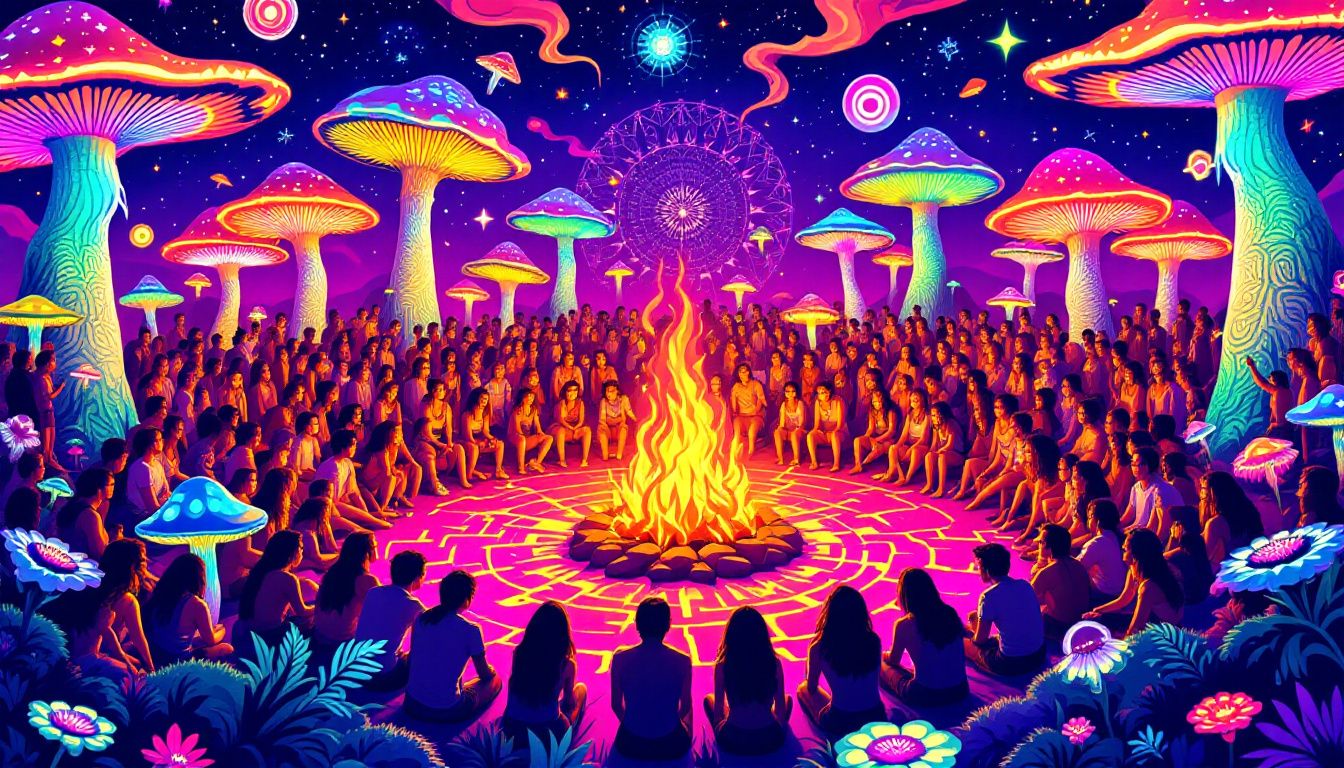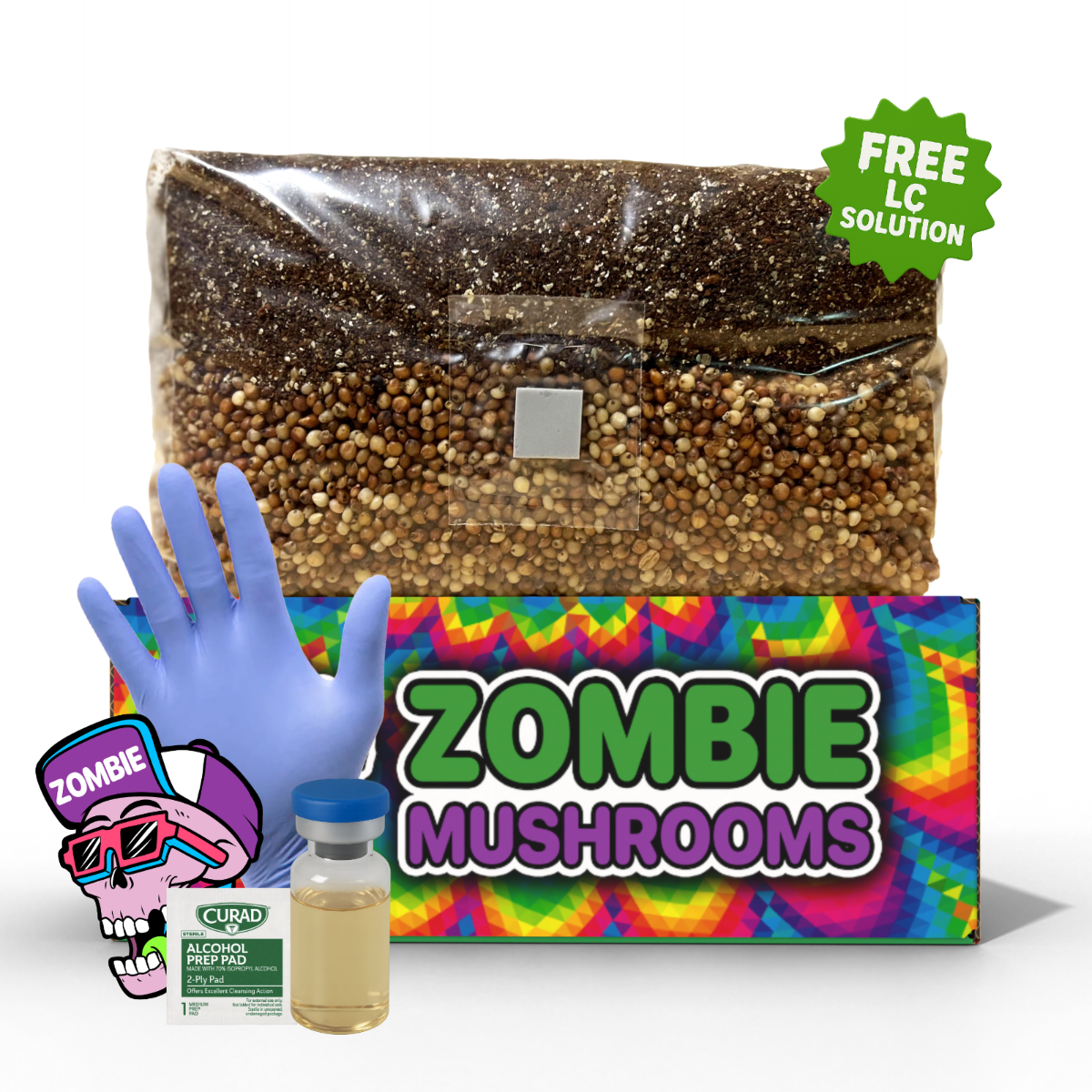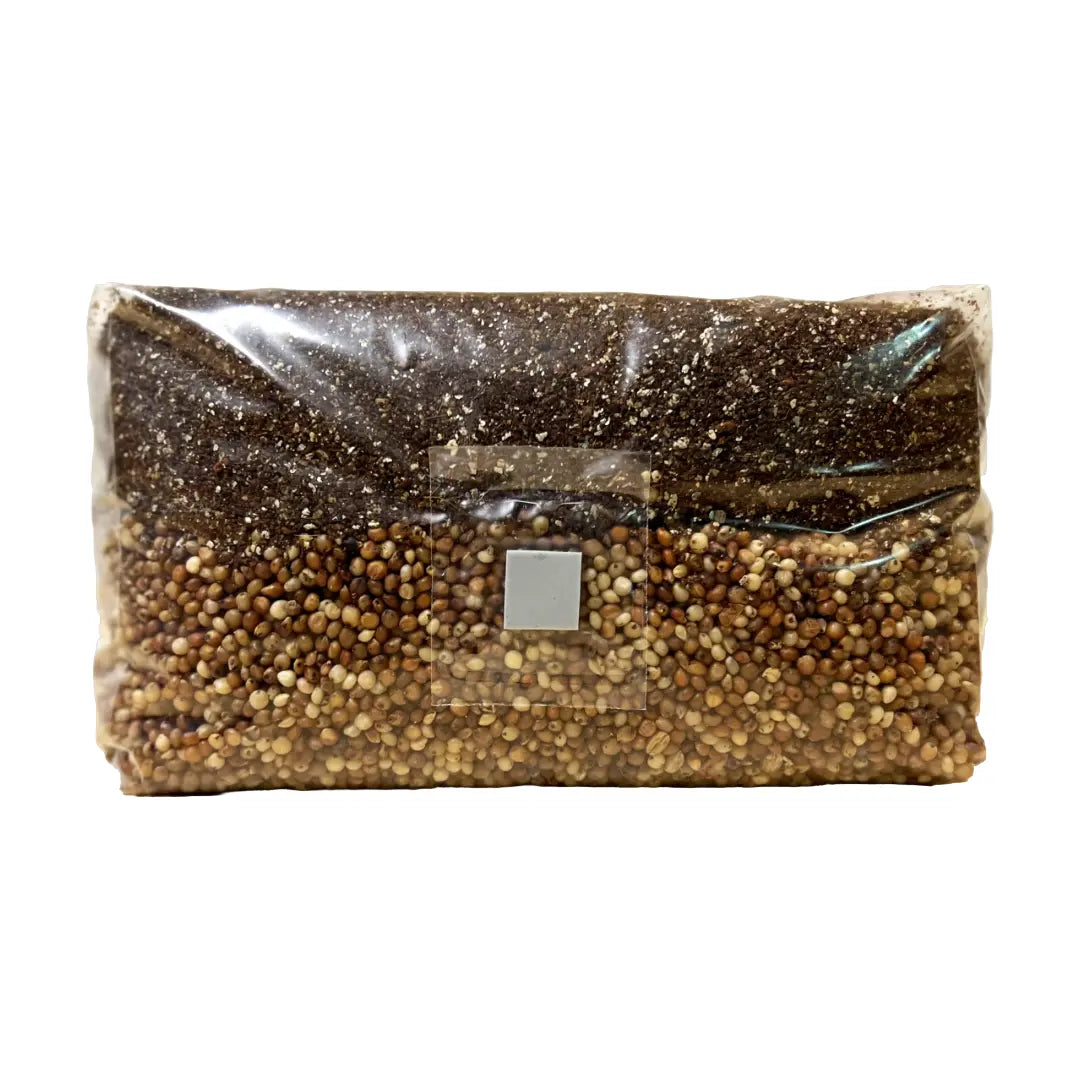The world is undergoing a psychedelic renaissance. Across the landscape of scientific research, cultural conversations, and wellness practices, substances like peyote and psilocybin mushrooms are being revisited not only as tools for spiritual growth but also as potential therapies for pressing mental health challenges. From ancient Indigenous rituals involving peyote to modern clinical settings utilizing psilocybin, these substances are sparking transformative changes on both personal and societal levels.
But what exactly makes these experiences so impactful? Is it the psychoactive compounds themselves, the rituals that surround their use, or a combination of both? This deep dive explores the therapeutic promise of peyote and psilocybin mushrooms, examining their similarities, differences, and the essential role of intentionality and safety in their use. For those drawn to learning more hands-on, starting with simple cultivation methods—like using a mushroom monotub kit—can provide valuable insight into the natural processes behind these powerful fungi.

What Are Peyote Rituals?
Peyote is a small, spineless cactus native to North and Central America and has been used for thousands of years by Indigenous peoples for its psychoactive properties. The cactus contains mescaline, a substance known for its ability to induce profound shifts in consciousness.
In Indigenous cultures such as those of the Huichol (Wixárika), Navajo (Diné), and the Native American Church (NAC), peyote ceremonies are sacred spiritual practices. These rituals often involve communal prayer, storytelling, singing, and deep introspection.
Key characteristics of peyote rituals include:
1. Sacred Context: Peyote is not used casually; it is integrated into ceremonies with the intent to heal, connect, and access higher spiritual realms.
2. Community Support: Participants often take part in group settings where the collective energy contributes to the individual’s personal healing process.
3. Guided Experiences: Elders or spiritual leaders facilitate the rituals, ensuring that participants remain anchored and supported throughout their journeys.
These experiences aim to help individuals confront unresolved emotional wounds, gain clarity on personal challenges, and feel a deeper connection to the natural world and their ancestors. The use of ritual and tradition ensures that the experience becomes more than an isolated event—it serves as a cornerstone of personal and spiritual growth.
Peyote and Mental Health: What the Research Says
Modern medicine is beginning to validate what many Indigenous cultures have long understood: peyote has profound healing potential. While its use is still restricted in many parts of the world, researchers are studying its ability to foster improved mental health outcomes, particularly for individuals facing existential crises, grief, trauma, or anxiety.
Key Findings in Peyote Research:
1. Reduced Emotional Distress: Studies suggest that peyote use in ceremonial contexts is linked to lower levels of depression and anxiety. Many participants report these benefits lasting long after the initial experience.
2. Improved Resilience: Anecdotal evidence and studies with Indigenous participants highlight increased emotional resilience and a greater ability to navigate life’s challenges following peyote ceremonies.
3. Existential Clarity: Peyote often induces experiences of transcendence that help individuals confront the concept of mortality and foster a stronger sense of purpose.
For example, in a study involving members of the Native American Church, individuals who used peyote in ceremonial settings demonstrated remarkably low levels of psychological distress compared to those who did not. These findings suggest that both the setting and the psychoactive properties of peyote play a crucial role in its therapeutic potential.
Modern science acknowledges that the benefits are not derived from mescaline alone—it is the combination of chemical action, ritual, and community that creates the transformative power of peyote ceremonies.
Psychedelics as Catalysts for Transcendence
A defining characteristic of psychedelics, whether it’s peyote, psilocybin, or others like LSD and ayahuasca, is their ability to induce transcendent states of consciousness. These experiences often dissolve the boundaries of the self, fostering a sense of unity, interconnectedness, and awe.
What makes these states meaningful is the way they reframe our perception of everyday life:
- Interconnectedness: Users often report feeling a profound connection to the natural world and humanity as a whole.
- Ego Dissolution: The sense of self temporarily fades, allowing individuals to shed burdens of guilt, shame, and judgment.
- Emotional Insights: By accessing deeper layers of the psyche, participants often gain clarity and newfound understanding about their emotions.
Although peyote and psilocybin both facilitate these states, they do so in distinct ways. Peyote experiences can feel intense and emotionally raw, while psilocybin’s effects are often described as gentle and introspective. Regardless of the tone, both substances highlight the role of transcendence in healing mental health conditions like depression, anxiety, and PTSD.
The Role of Ritual in Psychedelic Transformation
The ritual framework surrounding psychedelic substances significantly impacts the outcome of the experience. While the rituals tied to peyote have been preserved for centuries, similar intentional practices can also be applied to psilocybin use.
Why Rituals Matter:
1. Preparation: Participants prepare themselves mentally and physically for the journey ahead, fostering respect for the substance.
2. Integration: Sacred ceremonies provide tools and communal wisdom for individuals to integrate their insights into daily life.
3. Safety and Structure: Rituals minimize the risk of ""bad trips"" by providing a safe, guided space for exploration.
Modern psilocybin users can adopt similar approaches. Incorporating meditation, journaling, intention-setting, and post-journey discussions with therapists or trusted friends can enhance the insights gained during a psilocybin experience.
The popular phrase “set and setting”—referring to one’s mindset and physical environment—is foundational in ensuring psychedelics are used effectively and safely.
Comparing Peyote and Psilocybin: Similarities and Differences
While peyote and psilocybin share the ability to alter consciousness and catalyze healing, they differ in some critical ways:
| Aspect | Peyote | Psilocybin Mushrooms |
|------------------------|--------------------------------------|-----------------------------------------|
| Cultural Context | Rooted in Indigenous traditions and sacred ceremonies. | Associated with both modern therapy and recreational use. |
| Active Compound | Mescaline | Psilocybin (converted to psilocin in the body). |
| Emotional Journey | Intense, sometimes challenging emotional processing. | Gentle introspection, often accompanied by feelings of euphoria and awe. |
| Accessibility | Limited by legality and cultural preservation concerns. | Easier access due to cultivation and legalization efforts in some regions. |
While peyote’s use is deeply tied to sacred rituals, psilocybin provides a more accessible entry point for individuals curious about psychedelics. Both embody the potential for healing but offer unique avenues depending on one’s personal needs and the context of use.

The Potential Mental Health Benefits of Psilocybin
Psilocybin mushrooms have taken center stage in recent years as research on their mental health benefits continues to expand. Several groundbreaking studies highlight psilocybin’s therapeutic potential:
- Treatment-Resistant Depression: Patients with major depressive disorder often see significant improvements in symptoms after psilocybin-assisted therapy, even when other treatments have failed.
- End-of-Life Care: Terminal patients treated with psilocybin report reduced death anxiety and an enhanced ability to find meaning in their remaining time.
- Addiction Recovery: Substance abuse disorders, including smoking and alcohol dependence, show marked improvements after psilocybin therapy.
- Emotional Regulation: Participants report improved emotional regulation and increased openness weeks or even months after their sessions.
Such findings are driving efforts to integrate psilocybin into mainstream therapy, with clinics and advocacy groups lobbying for expanded access.

Navigating Challenges: Risks and Integration in Psychedelic Practice
While the promise of psychedelics is compelling, challenges remain. Psychedelic experiences can sometimes be emotionally overwhelming, especially if taken without adequate preparation or in an unsupportive environment.
Common Risks and How to Address Them:
1. Anxiety or Fear: Strong emotions may surface during a session. A skilled guide can help the participant navigate these feelings.
2. “Bad Trips”: Safety and intentionality are essential in preventing or minimizing negative experiences.
3. Integration Issues: Profound insights can be difficult to process without support systems in place.
To mitigate risks, experts emphasize the importance of:
- Working with trusted facilitators or licensed therapists.
- Using lower doses for beginners to acclimate to altered consciousness.
- Engaging in post-experience integration practices such as therapy, journaling, or community discussions.

The Science of Psychedelics and Neuroplasticity
Emerging research suggests that psychedelics stimulate neuroplasticity—the brain’s ability to form and reorganize neural connections. This is particularly relevant for individuals dealing with mental health conditions like depression, which involve entrenched negative thought patterns and behavioral habits.
How it works:
- Psychedelics trigger the release of brain-derived neurotrophic factor (BDNF), a molecule associated with brain plasticity.
- Increased connectivity between neural networks allows individuals to see problems through fresh perspectives.
These changes explain why many users report enduring improvements in mood, outlook, and adaptability long after their psychedelic experience has ended.

Psychedelics for Spiritual Growth and Death Anxiety Reduction
Another remarkable benefit of psychedelics lies in their ability to alleviate death anxiety and foster profound spiritual insights. Clinical research with psilocybin and anecdotal reports from peyote ceremonies point to similar outcomes.
When guided properly, these experiences help participants:
- Reframe death as a natural and interconnected process.
- Develop a deeper sense of spiritual belonging.
- Find comfort in existential truths, reducing fear and uncertainty.
Terminal patients and older adults, in particular, report a heightened ability to find meaning and embrace the concept of mortality thanks to psychedelic therapy.

Best Practices for Safe and Intentional Psychedelic Use
If you’re curious about exploring psychedelics, follow these best practices to ensure safety and maximize the therapeutic benefits:
1. Educate Yourself: Understand the substance, its effects, and the context for safe use.
2. Curate Your Setting: Choose a comforting, familiar environment.
3. Set Clear Intentions: Reflect on what you hope to learn or heal during the experience.
4. Seek Guidance: Lean on experienced facilitators, therapists, or trusted friends for support.
5. Integrate Your Experience: Use journaling, meditation, or therapy to make sense of what you learned and apply it to your life.
Psychedelics are not a quick fix but a tool requiring mindful use to unlock their full potential.
How the Mycology Community Is Contributing to Psychedelic Research
The growing interest in psilocybin has ignited a vibrant mycology community, which is playing a pivotal role in advancing research and accessibility:
- Mushroom Cultivation Education: Enthusiasts teach others how to cultivate mushrooms safely and responsibly, democratizing access in regions where it’s legal.
- Data-Sharing: The community helps researchers gather data on psilocybin use and its effects, enriching our understanding of the substance.
This grassroots movement humanizes psychedelics while fostering greater accountability and shared learning among users.
What the Future Holds: Psychedelics, Wellness, and Holistic Health
As psychedelics move further into mainstream consciousness, their potential applications are expanding. Legalization and decriminalization efforts are gaining momentum, and psychedelic-assisted therapy is on the cusp of becoming a standard option for mental health treatment.
The interplay of ancient rituals and modern research shows how these substances can serve as bridges between spirituality and science, promoting not just healing but an enhanced quality of life.
Key Takeaways
- Peyote and psilocybin share transformative potential but have distinct cultural, spiritual, and emotional dimensions.
- Ritual and intentionality play a critical role in the success of any psychedelic experience.
- Research highlights significant benefits for depression, anxiety, addiction recovery, and grief, but integration is key for lasting effects.
- Psychedelics enhance neuroplasticity, enabling the brain to adopt healthier mental frameworks.
- Careful preparation, professional guidance, and post-experience support ensure safety and unlock the profound benefits of these substances.
- The mycology community is democratizing access to psilocybin mushrooms while supporting education and research.
As the psychedelic renaissance continues, the fusion of ancient wisdom and modern science could reshape how we approach mental health, spirituality, and wellness.
---
Call-to-Action:
Ready to further explore the therapeutic and spiritual potential of psilocybin mushrooms? Check out our comprehensive resources and discover high-quality mushroom grow kits to begin your safe and intentional journey today. Want to learn more? Subscribe to our newsletter for insights, stories, and the latest in psychedelic research!"



